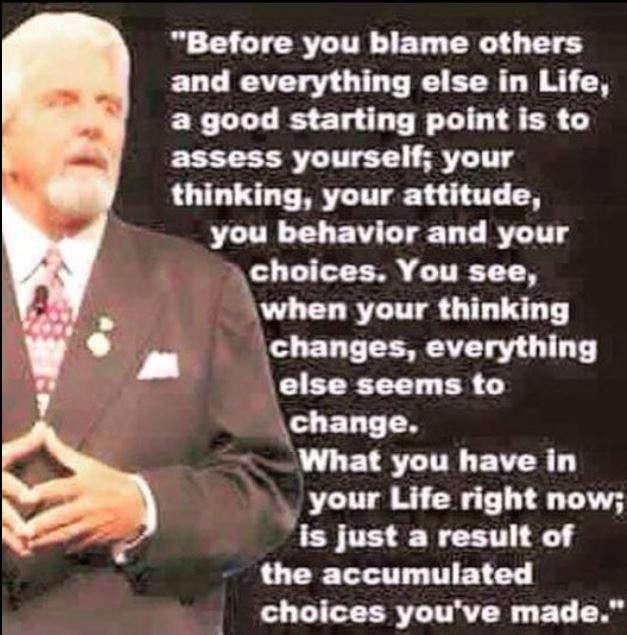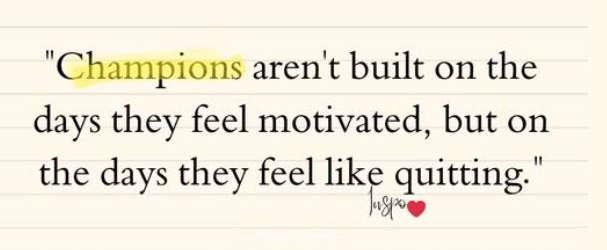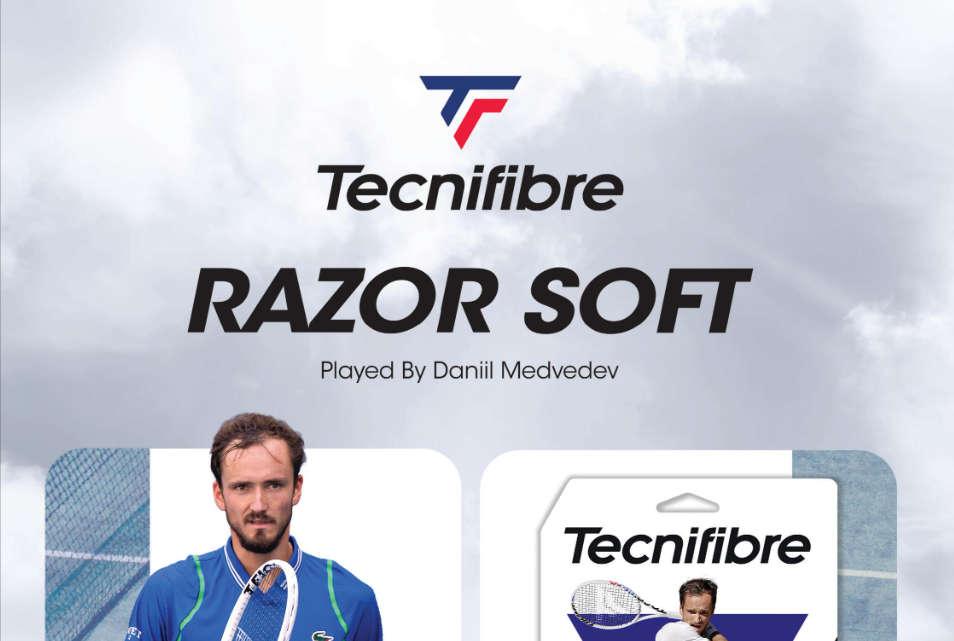


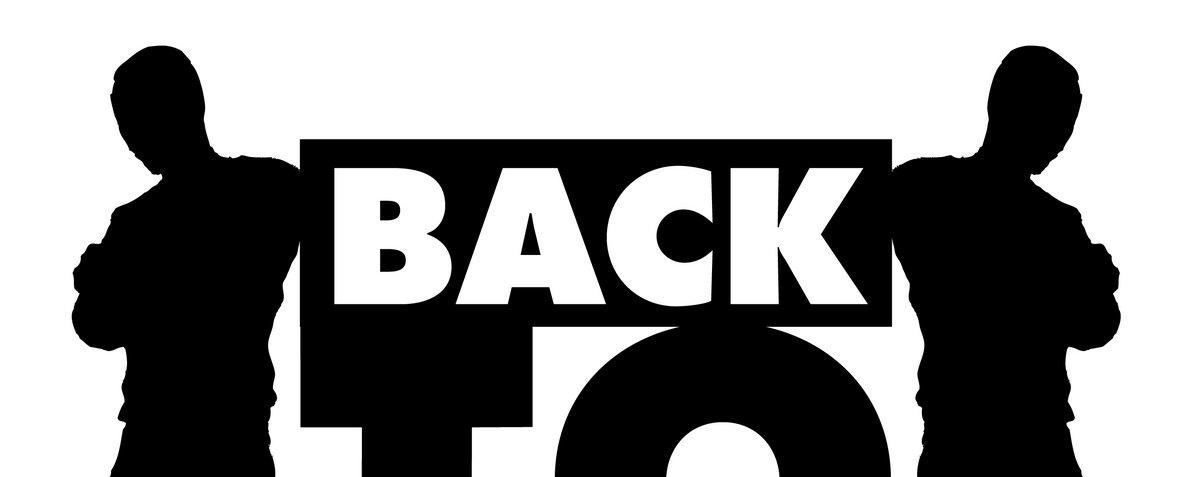
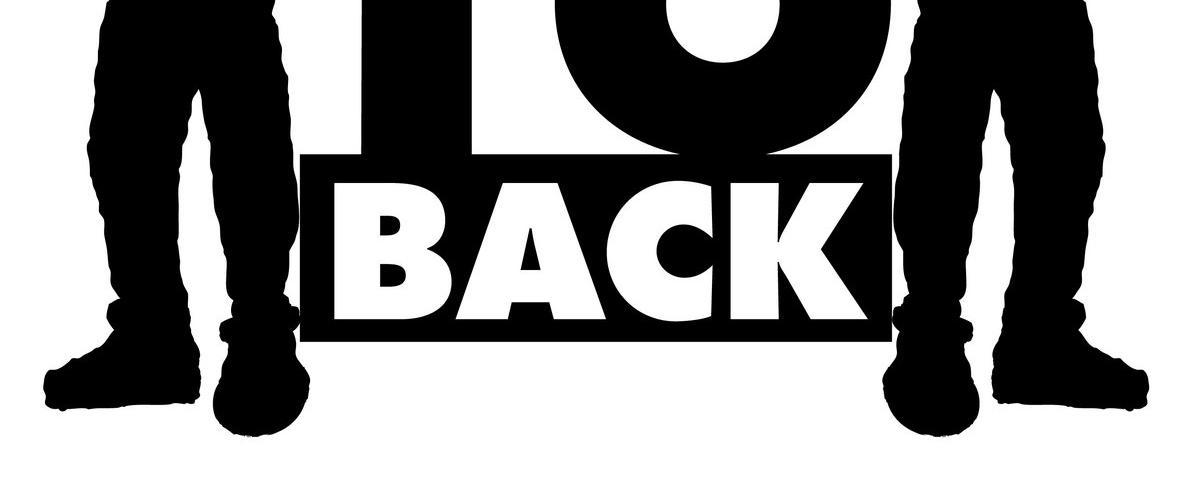


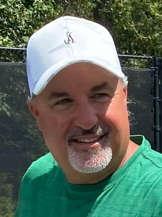









Dear RSPA Southern Family,
As we approach the final stretch of the year, I want to take a moment to thank every member of our Southern and State Boards for your con�nued dedica�on and service to our organiza�on. It has truly been an honor to serve alongside each of you over the past two years.
It was wonderful to connect with so many of our Southern members at the World Conference in Hawaii. The event was an incredible experience from the outstanding speakers and valuable networking opportuni�es to the fun and camaraderie of our Division Olympics. A special shoutout to our talented group who gave a memorable performance of a Taylor Swi� song you were fantas�c!
I also want to share an update on our search for a new Execu�ve Director. We’ve received approval to move forward, and we have several strong candidates lined up for inter-
By Ken Andriano
views. We’ll be sure to keep everyone informed once a selec�on has been made and a start date is set.
A hear�elt thank-you goes to Pat Whitworth for his many years of dedica�on and leadership within our Southern Division. Pat’s contribu�ons to our industry are immeasurable, and his willingness to help others has made a las�ng impact. Pat, we wish you nothing but the best in your next chapter you will be greatly missed!
For those looking to con�nue learning and growing, several states will be hos�ng workshops before the start of 2026. Keep an eye out for more details. We hope to see many of you there.
Finally, thank you all for your ongoing passion and commitment to advancing our industry. Your energy, engagement, and enthusiasm con�nue to strengthen our RSPA Southern community.
Warm regards, Ken

Southern
President Ken Andriano
1st VP Allan Jensen
VP Darryl Lewis
Sec/Trea Emillia Viljoen
Alabama
President JC Freeman
1st VP Jeff Barrera
Sec/Trea Jenny Robb
Arkansas
President Paul Pautsch
1st VP Gail Nankervis
2nd VP Raul Bermudez
Secretary Wya� Miller
Treasurer Daniel Cornelison
President Bill Anderson
1st VP Stewart Atkins
2nd VP Jonathan Benne�
Secretary Bobby Schindler
Treasurer Adam Christopher
Tennessee
President Geoff Browne
1st VP Brian Perry
VP Courtney Colton
Treasurer MJ Garne�
Secretary Mark Srouji
Louisiana
President: Anna Monhartova
Vp 1: Lucas Richardson
Vp 2: Hassan Abbas
Sec/Treas: Victoria Krutzer
Mississippi
President Michael Edge
1st VP Bo Gard
Secretary William Foreman
Treasurer Turner Hughes
North Carolina
President Jarrod Liston
1st VP Alec Moore
Secretary Kevin Brundle
Treasurer TBD
South Carolina
President Tom Ruth
1st VP TBD
VP TBD Kentucky
President Chuck Brown
Others TBD


The RSPA World Racquets Conference 2025, held in Kona, Hawaii, and virtually in September, was a resounding success, with a focus on its theme of "Rebrand You" and a slate of top speakers covering topics across multiple racquet sports. Attendees and virtual participants praised the expert-led sessions, networking opportunities, and a hands-on approach designed to empower individual professionals. The conference also featured an awards ceremony recognizing notable figures in the racquet sports industry. This year featured the new Vendor Village with expanded access to the vendors. Everyone really enjoyed the speakers and seeing all of them multiple times, which was used to keep costs at a reasonable rate. With so many amazing speakers, this was a home run.
Featured Speakers: A variety of renowned experts presented on coaching, strategy, business, and highperformance mentality. Notable names included:
Mats Wilander (7-time Grand Slam Champion)
Brenda Schultz-McCarthy (Former Top 10 WTA Player)
Our own Dr. Sophie Wooron
Fernando Segal (Global Tennis Development Leader)

Andrei Daescu and Marcos del Pilar (Experts in pickleball and padel, respectively)

Conference highlights
Theme: "Rebrand You": The 2025 event was centered on professional development and career advancement for individual members.
Location and Format: The main conference took place in Kona, Hawaii, with a virtual package offered for remote attendees. On-site events included on-court education and networking, while the virtual pass offered on-demand access to more than 30 sessions.
And CEO Brian Dillman with the conference launch of Rebrand You – a must view
Award Winners: The conference recognized outstanding contributions to racquet sports with its annual awards:
Tim Heckler Hall of Fame Award: Dr. Dave Porter, recognized for his impact on collegiate tennis and the coaching community.
George Bacso Lifetime Achievement Award: Pam Austin, for her career accomplishments in the racquet sports industry.

Alex Gordon Racquet Sports Professional of the Year Award: Bunny Bruning.























By Jennifer Hornsby
I would like to take a moment to thank the RSPA President (Trish Faulkner), RSPA CEO (Brian Dillman), and the RSPA Board of Directors for the John Embree Scholarship to a�end September’ s conference. It was a privilege and honor to be one of the two a�endees selected for the scholarship.
effort to a�end in the future! Seek every resource from your club management or apply for the John Embree Scholarship like I did. The amount of informa�on that you learn from the presenters, combined with the networking opportuni�es with other RSPA members, promises to be a life�me experience you will always remember. This experience will forever be a memorable one for me!

What an experience! As a first -�me a�endee, I was unsure what to expect, but the Sunday kickoff event immediately drew me in. Seeing coaches from diverse backgrounds across gender, age, and na�onality was inspiring. This resonated with my own journey: born in Vietnam during the war, reunited with my father in the late 80s, and adap�ng to life in the U.S. without knowing English. My childhood and adulthood both brought challenges, but tennis has always been my outlet. Facing adversity taught me resilience, empathy, adaptability, gra�tude, and determina�on.
PS: I even got out of my comfort zone and par�cipated in the division karaoke compe��on as a background dancer with people I didn’t know (Shake it Off by Taylor Swi� will NEVER be the same)!
President Trish Faulkner with Jennifer


A�ending the RSPA World Conference reinforced that learning never stops, no ma�er your experience level; there’s always something new to gain from others. The impressive speaker roster and shared teaching approaches reassured me. One key lesson was the value of pu�ng myself out there, even without a club or collegiate -professional background. I now see the need to advocate for myself, grow my social media, and expand my network to support new coaches and players. My passion for tennis fuels my commitment to keep growing as a coach, mentor, player, and community leader.





If you are a member of RSPA and you have not a�ended the world conference yet, I implore you to seriously consider making every































We are pleased to announce that the current RSPA Alabama Board will con�nue for the 2026-27 term. Thank you to these dedicated individuals for their commitment and contribu�ons to RSPA. We invite you to join us for our annual complimentary workshop on Sunday, December 7, at Samford University’s indoor facility from 9:00 AM to 3:30 PM. Special thanks to Coach Oliver Reynolds for securing this venue. The workshop will include lunch from 12:00 PM to 12:30 PM, a happy hour and roundtable discussion at 2:30 PM, and offer 9.75 educa�onal credits. The program will also engage high school and college players and coaches who may join the RSPA. The agenda features a pickleball presenta�on and sessions focused on strategies to enhance your business as a teaching professional. Details and registra�on form will be available soon.
Mark Your Calendar! The RSPA Georgia Workshop is Friday, 12/5 from 8:00-2:00. Join us for a dynamic and inspiring Georgia State Workshop designed for racquet sports professionals. This event is packed with valuable insights, on- and off-court learning, and networking opportuni�es.
Workshop Highlights: Career & Professionalism Panel - Featuring local Pla�num Club Directors, Junior Development Pathway - Seminars led by Georgia’s top junior tennis leaders, Industry Insights - Covering Tennis, Pickleball, and Padel, Drill, Drill, Drills Baby! - High -energy, on-court sessions, Buffet Lunch & Learn - Hosted by the American Racquet Sports Associa�on (formerly GPTA)
A�endee gi� is an Exclusive RSPA-Branded Travis Ma�hew Jacket (Retail Value: $150) for the first 30 sign-ups. Registra�on Fees: $35 – RSPA Members $45 – Non-Members
On November 6 in Bowling Green there is a College Showcase for high school junior and seniors. Numerous college coaches will a�end to meet about playing college tennis opportuni�es and showcase your game in point play.
There will be 2 UTR tournaments in Owensboro, KY at Merchant Centre Court on November 11-12 and 22-23. RSPA Kentucky is working on a Tennis Workshop for its members in the upcoming year. Stay tuned for more info. We also need current RSPA members on our state board. Contact RSPA Kentucky President Chuck Brown chuckb0815@gmail.com for more info or drop by the college showcase.
This will be my last newsle�er as your state president, but I won't be going away. I'll remain on the board as an ac�ve member. We will be in good hands with our incoming President Michael Edge. We had a great joint RSPA MS and USTA MS Fall Tennis Summit on October 4th. Ellen Miller and Jim Hamm are both a wealth of
knowledge and they love coming to Mississippi, so please check out the USTA Mississippi Youtube page where you can find their presenta�ons. Our annual State Workshop this year will be January 30th, and as usual we will have a great lineup as a part of our USTA MS Tennis Weekend.
This past July, we hosted a successful state workshop at Duke University, featuring speakers Lane Evans, Darryl Lewis, and Chris Hoshour. The event was very well received, and we are pleased to announce that the workshop will return to Duke University next July. Our State Workshop is scheduled for December 13th at Blakeney Racquet Club in Charlo�e, NC. This year’s lineup of speakers is excep�onally strong. Mike Barrell, Director of the John McEnroe Spor�me Academy is our featured presenters. Also joining the program are Steve Keller from the USTA, Bill Riddle, Lane Evans, Master Professional, and Chris Hoshour, High Performance Coach of the Year. Welcome our 2026-27 Board of Jarrod Liston, Alec Moore, and Kevin Brundle.
it’s that �me of year again! We are now accep�ng nomina�ons for SC Professional of the Year and SC Assistant Professional of the Year. All nomina�ons, including self -nomina�ons, can be submi�ed to mark@schminketennisacademy.com. Please be sure to include complete contact informa�on for each nominee. The deadline for submissions is November 8th. We’re also excited to announce the RSPA South Carolina State Workshop, taking place on Sunday, December 14th at Schminke Tennis Academy, located at Chris�an Academy of Myrtle Beach. This half-day workshop will feature a lineup of new and dynamic speakers, both on and off the court. All a�endees will receive gi�s and enjoy a complimentary light breakfast. Addi�onal details will be emailed soon.
RSPA Tennessee is excited about our new board for 2026 -2027. Thanks for services from previous board members Sarah Evans and Daniel Shidler. The new board welcomes Mark Srouji - Secretary and Courtney Colton - 2nd Vice President. Con�nuing on the Board is MJ Garne� - Treasurer, Brian Perry - 1st Vice President, and Geoff Browne - President. The Winter Workshop will be held Saturday, December 13 in Nashville. The keynote speaker is RSPA Hall of Fame and Master Pro Bill Tym. There will also be a drill exchange contest with the top drills receiving gi� cards.
Be on the lookout for info and updates for our January workshop.

By J. Monroe Laborde, M.D., M.S.
Dr. Laborde prac�ces Orthopedic Surgery at Touro Infirmary and is the director of foot surgery at LSU Health Science Center and University Medical Center in New Orleans. IIe was selected as the innovator of the year by City Business Magazine in 2008 and outstanding Tulane Biomedical Engineering graduate in 2017. He is on the Board of the Academy of Ambulatory Foot and Ankle Surgery.
Dr. Laborde jogs, rises stair machine and does strengthening exercises two or three �mes a week. He usually plays tennis 10 hours a week and has won club championship in singles four �mes and doubles nine �mes.
Tennis players commonly develop pain in elbows. shoulders, and feet. Tendini�s is the most common problem causing pain in these areas in tennis players. Muscles are a�ached to the bone by tendons. The muscles are the shock absorbers and if the muscles are overloaded, the tendon can be injured. If the muscles are weak or �ght, tendon injury is more common. These problems can usually be prevented or cured by strengthening and stretching exercises. Strengthening should be done a�er playing tennis or on days when not playing tennis. Stretching should be done before playing tennis, but at least daily. Strengthening should be done two or three �mes a week.







to prevent injury to medial forearm muscles.
The exercise for tennis elbow is performed in the seated posi�on with the arm res�ng on a table and the hand with the wrist extending over the end of the table with the palm down (Figure 1). A light dumbbell is then raised and lowered slowly. If this can be done more than 10 �mes, the weight should be increased. If it is very painful, then the weight should be lowered. Two sets of 10 repe��ons are recommended, alterna�ng sides. Weight should be increased
For medial elbow pain, the same exercise is done with the palm up. Dr. Laborde gradually increased to 35 pounds with the palm up and 25 pounds with the palm down and has not had any elbow pain since doing this exercise.
The most common shoulder problem is tennis players is rotator cuff tendini�s. This results from rotator tendon injury because









Lateral elbow pain or tennis elbow results when the muscle is not strong enough to prevent injury to the tendon when the ball hits the racquet while hi�ng a backhand. This is prevented or cured by strengthening the dorsal forearm muscles. Medial elbow pain occurs when medial muscles are not strong enough

of weakness of the rotator cuff muscles. Rotator cuff muscles can be strengthened using dumbbells, slowly raising the arms to the shoulder level out from the side of the body. The weight is held up for 5 seconds and then slowly lowered (Figure 2). A low enough weight should be used so it is not exceedingly painful. If more than 10 repe��ons should be done, the weight is increased. Since I have go�en up to 12 pounds with this exercise, I have not had any rotator cuff problems. Tightness of the calf causes or aggravates

From October 7–9 in Tucson, Arizona, over 60 pickleball club operators and vendors gathered at the 2025 Pickleball Innovators Summit for three days of strategy sessions, candid peer discussions and forwardlooking dialogue on the business of pickleball. If one theme defined the event, it was this: The gold rush phase is coming to a close, and the professionaliza�on era has begun. Below are the biggest takeaways and most talked-about insights that will shape how the industry evolves from passion projects to polished, profitable businesses.
Operators across mul�ple markets agreed: talk of “too many clubs” misses the point. Even in dense markets, success depends less on how many courts exist and more on who you serve and how well you understand them. As one a�endee put it, “Every market has an opening if you know your niche and your numbers.”
Leaders shared how they’re trea�ng expansion more like real estate inves�ng analyzing income bands, traffic pa�erns and recrea�on trends rather than relying on intui�on or blind op�mism. As one operator explained, “We’re looking at every community like an ecosystem who plays, what they spend and what social energy exists there.” Others emphasized partnering with local influencers and ambassadors to “get people in the door faster than any ad ever could.”
A Maryland operator said their best marke�ng move was sponsoring local high school leagues, not because it was profitable, but because it “created a ripple effect parents, friends and teachers all started playing.” Others are using crea�ve tac�cs like free fi�h -grade memberships to draw in youth and families early.
The consensus: Oversatura�on isn’t killing clubs sameness is. Those who win are defining iden�ty and culture as sharply as any hospitality brand.
by Rachel Chonko
Technology dominated much of the conversa�on but so did frustra�on. “There’ s almost no single system that does it all,” one a�endee admi�ed. “We use five apps to run one club.” Operators stressed that the next wave of success won’t come from more so�ware, but be�er integra�on.
“Find one pla�orm your staff and members actually enjoy using,” said another a�endee. “If you add another app, make sure it replaces two others.”
Several a�endees shared the importance of tracking customer sa�sfac�on through Net Promoter Score (NPS) technology, which provides real-�me insight into member sa�sfac�on and opera�onal fric�on. “It’s
ergy isn’t there, it won’t ma�er,” said one leader. Clubs are doubling down on hospitality taking cues from brands like Chickfil-A. “We talk a lot about KPIs, but our real measure is how members feel when they walk in,” one a�endee shared. “That’s what keeps them coming back.”
Reten�on-focused ideas included passport programs that reward members for trying new experiences, surprise-and-delight moments and loyalty incen�ves like free balls or shirts for milestone check-ins. Others are launching theme nights from Olympic -style events to “Pickle & Grill” potlucks to build connec�on beyond play. But culture also extends to staff. As one operator said, “Hire

not just about asking if they had fun,” said one operator. “It’s about understanding how easy the experience was and where the pain points are.”
One standout example was the “Appy Hour” event: a social happy hour where staff and members learn to use the club’s app together. “We turned tech training into a party,” shared one operator. “Adop�on skyrocketed because people learned while connec�ng.” As AI quietly enters the space from predic�ve analy�cs to automated communica�on the message was clear: Technology should enhance connec�on, not replace it.
If one phrase echoed through the event, it was this: “People return for people.” Operators repeatedly emphasized that culture, not courts, drives reten�on. “ You can build the best facility in the world, but if the en-
for heart, then teach the rest. We coach them up or coach them out.” In short, the new compe��ve advantage isn’t courts it’s community. The best clubs are tracking KPIs like NPS, reten�on and engagement as seriously as financial ones.
Membership dues alone won’t sustain the next phase of pickleball growth. Leaders shared a long list of crea�ve revenue streams corporate team-building events, tournaments, recovery services, sponsorships, digital ad sales and branded merchandise. One operator summed it up best: “Every square foot has to work twice once for play, once for profit.”
From EV chargers that generate passive income to digital TV screens selling local ad space, the industry is experimen�ng with new ways to mone�ze without compromising the member experience. “We’re basi-
Con�nued next page
cally a hospitality business with paddles,” said one a�endee. “Our job is to fill the building not just the courts.”
Youth programming and day�me ac�va�on were also hot topics. “Our Medicare partnerships filled our slowest hours,” shared one operator, who turned midday open play into a thriving social program for seniors. Another success story: themed events genera�ng over $500,000 annually at one facility through consistent, crea�ve programming. The takeaway: Revenue diversity is risk insurance. When one stream dips, another keeps the lights on.
If any session underscored the industry’s maturity, it was the Future of Pickleball and Industry Vision panel. Speakers like Will Richards (Dill Dinkers), Laura Kemp (Chicken N Pickle), Carl Schmits (USA Pickleball) and Jorge Barragan (The Picklr)

spoke with both op�mism and realism about where pickleball is headed. “We’re entering an era of professionalism,” said Richards. “The goal isn’t just expansion it’s profitable replica�on through discipline.”
Richards detailed how Dill Dinkers has learned hard lessons about right-sizing facili�es and site selec�on discipline, warning operators not to “chase square footage over profitability.” He also called out “broker fa�gue” as a major challenge for franchises and urged operators to “evaluate deals like investors, not enthusiasts.”
From the broader industry perspec�ve, USA Pickleball’s Carl Schmits shared that facility cer�fica�on and global standards are becoming a major focus. Meanwhile, Barragan described the sport’s global trajectory, referencing that 32 countries were represented in this year’ s Pickleball World Club, with 60 expected next. Even as excitement builds, operators are mind-
ful of sustainability. “We’ ve all seen what happened to racquetball,” said one panelist. “If we don’t lead with strategy, structure and collabora�on, we risk the same fate.” The industry’s next evolu�on won’t be about hype it’ll be about health, infrastructure and inten�onal growth.
The 2025 Pickleball Innovators Summit marked a turning point. What began as a wave of passion projects has matured into a professional, data-informed industry ready for its next leap. As pickleball con�nues its march toward global legi�macy even Olympic poten�al one truth stands above the rest: The winners will be those who balance innova�on with consistency, technology with humanity and compe��on with community. As one a�endee put it: “We’re just scratching the surface. The opportunity is incredible, but it’s on us to steward it wisely.”
By Mark Schminke RSPA Elite Professional
As a coach, I’m always looking for tools that help players feel and understand their technique more clearly. The SPIVO® does exactly that. It’s a small clip -on device that a�aches to your racket and provides instant audible feedback on your swing. The concept is simple: *no spin, no sound more spin, louder whistle.* That real-�me cue helps players recognize when they’re genera�ng proper rota�on and swing mechanics. How It Works
SPIVO® snaps securely onto the racket frame in seconds. Built with durable POM and flexible TPU materials, it’s designed to withstand regular court use. There’s no setup, no app, and no ba�eries just pure, direct feedback every �me you swing. Why Coaches Love It
SPIVO® stands out because it turns feel into feedback. We o�en tell players to “brush up on the ball” or “accelerate through contact,” but those cues can be difficult to measure. With SPIVO®, players hear the difference immediately.
I’ve used it in lessons for:
• Topspin training – reinforcing the brushing ac�on for heavier groundstrokes.
• Serve spin work – helping players refine slice or kick serves.
• Solo prac�ce – le�ng players self-correct without constant input.
• Instant feedback with no tech setup
• Reinforces correct swing paths and spin
• Compact, durable, and courtready
• Engages players through sound and feel
A Small Word of Cau�on

It’s important not to let players rely too much on the whistle use it as a learning bridge, then phase it out once they internalize the mo�on. In very loud environments, the sound may also blend into background noise.
Final Take
SPIVO® is one of those rare training aids that’s simple, effec�ve, and genuinely fun to use. It helps players make the connec�on between what they feel and what’s actually happening in their swing exactly what we strive for as coaches.If you’re looking for a tool that adds an extra layer of awareness and accountability to your prac�ces, SPIVO® is well worth adding to your coaching toolkit.
Learn more or order yours directly at www.spivotennis.com

By Geoff Browne, RSPA Elite Professional

In today’s tennis landscape, teaching pros are more than just instructors they’re entrepreneurs, brand builders, and community leaders. Whether you’re working at a private club, a public facility, or running your own academy, your success depends not just on your coaching ability but also on how well you manage the business side of your profession.
1. Treat Your Coaching as a Brand
Every successful tennis pro has a clear iden�ty. Ask yourself:
What makes your teaching unique?
Who is your ideal client junior compe�tors, adult beginners, or high-performance players?
How do people describe your coaching style? Developing a consistent personal brand helps you a�ract the right players and build trust. Use simple, professional branding such as a logo, color scheme, and tagline across your website, business cards, and social media.
2. Build a Strong Online Presence
In 2025, visibility equals credibility. Even a simple website with your bio, lesson offerings, rates, and tes�monials can set you apart. Add:
Short video clips of drills or �ps on Instagram or TikTok.
Player tes�monials on YouTube or Google Reviews.
Email newsle�ers to stay connected with current and former students.
Consistency beats perfec�on. Pos�ng once a week is enough if it’s authen�c and useful.
3. Diversify Your Revenue Streams
Avoid relying solely on one -on-one lessons. Consider adding:

Presented by McMahon Careers
Group clinics and camps for scale.
Online coaching video analysis or Zoom strategy sessions.
Branded merchandise (shirts, hats, grips).
Affiliate partnerships with local pro shops or tennis brands.
The goal: earn more while working smarter, not longer.
4. Master Client Reten�on
New students are great but keeping them is where your profit grows. Build loyalty by:
Tracking player progress and celebra�ng milestones.
Sending follow-up messages or seasonal updates.
Offering membership packages or lesson bundles.
Crea�ng community events like “Parent-Player Day” or doubles socials.
Personal touches make players feel valued and more likely to stay and refer friends.
5. Manage Your Finances Like a Pro
Many tennis pros overlook financial planning. Keep clean records of income and expenses, track seasonal trends, and set aside money for taxes. Consider:
Using apps like QuickBooks Self-Employed or Wave Accoun�ng
Se�ng aside 10–15% of income for marke�ng or equipment upgrades.
Building a small emergency fund for slow seasons. Remember: financial organiza�on equals freedom and confidence.
6. Keep Learning and Networking
The tennis industry evolves so should you. A�end coaching conferences, earn cer�fica�ons, and connect with other pros online. Networking not only boosts skills but can lead to job offers, partnerships, or tournament opportuni�es.


From the Virtual Business Conference – Tom Daglis –Tips for Your Dream Job Applica�on
Gain as much informa�on as possible about the loca�on, facility, and job demands. How many courts? Type of courts? Other racquets courts. Lighted? How many member and the median age? How many younger families? How close do a majority of the members live to the facility? What are the facility expecta�ons for the new hire?
What are you looking for in your dream job? Match your skills to the posi�on. The right fit is key. You may want the job and seem a good fit, but another candidate may be stronger in an area that the club is very concerned about.
Who is your immediate supervisor? What is the size of the staff? Is it required to keep all of the staff? Who can fire a staff member?
Financials as possible? Is this for profit or member owned? This lets you know if dollars can be spent for services that push member sa�sfac�on, or if it is to drive membership fees. What is the tennis budget? How does billing work? Any cash accepted? Who sets the rates? Who does court maintenance?
How long has the GM been at the facility? How many have been there over the last 10 years? Are there racquet commi�ees? How ac�ve?
What would a typical work week look like? What days off? Can we teach non -members? What is the benefits package? Is there an educa�on allowance? Professional
dues? Reloca�on? Who pays for teaching supplies and teaching balls? Is there an office?
Resume & appearance: You only get one chance to make a great impression. Make sure your resume is perfect. Try to avoid the plain look by adding some pop with color, fonts, and layout so you stand out. Include work history, professional honors. Make sure your contact info is easy to find. Max of 2 pages, be careful of trying to put in too much. Red flags are gaps in work history. Be prepared to explain any. Include real data and measurements about improvements and increases.
The cover le�er is your chance to highlight yourself. Many �mes the resume will not be fully looked at, so use the cover le�er to grab a�en�on to what you offer. Not too generic, make it for the current applica�on. Personalize it instead of To Whom It May Concern. Grammar & Spelling have to be correct in all communica�ons. Use a standard digital format like PDF.
What do YOU clearly want from the job? How is this your dream job? Research to area to make sure it is also the dream area to live.
Make sure to be upbeat and bring the energy. A lot of people are looking for this in a hire. They want to hire a star!! Pull from the job pos�ng and relate to what they are looking for. Ask ques�ons like What are your current concerns? What have been trouble spots in the past?
What do you envision your new hire to be like?
Dress –do not come in racquet clothes, but bring them with you if they ask for you to go on court.
Make sure your social media is ready to be viewed.
Once finished, send personalized thank you notes. You are being compared to other candidates and this will remind them about you.
Ul�mately, you need to show what you can do for the club, not just what the club offers for you.








Review by Pat Whitworth RSPA Master Professional
by Bill Schillings
Bill is s�ll a southern pro, based in North Carolina. This book is a fairly quick read, and a fun read. We experience the journey of tennis as a sport, a profession, and the life changing events and interac�ons that happen along the way. You will meet very well-known people along the way, as well as the normal people that leave a las�ng impression. Bill starts the book with what mo�vates us to achieve, how the chase needs a rabbit, and the importance of a mentor or coach. We follow his journey as a junior player, to college and the pros, and on to a coaching career.
He o�en refers to the players that seem unbeatable, and with effort and staying on track, he is able to overtake many of them. What seemed impossible, morphed into a chance, and then a posi�ve. Then he got the lesson of his life when he played an old guy (adult), that did not hit as clean as him, but quickly dispatched him as he kept trying the perfect shot. A big lesson was to learn to play, not just hit.

Travel is a big
part of this read, and Bill’s travels in college and in Europe while playing professionally are tales that won’t let you put the book down. We all have these are experiences that are never forgo�en, and Bill has done a nice job sharing his fortunes and misfortunes.
Bill con�nues to explore processes and higher standards of both playing at the top level, and becoming a top level coach. Along the way he crosses path with many great players including Luke & Murphy Jensen, Pender Murphy, Ritchey Reneberg, Jimmy Arias, Tim Wilkison, and a few more. It was a short tour life for Bill, but full of memories and friends for life. A few notes he shares that will help anyone compe�ng in a sport include: Make the most of every moment, Prepare for everything, Maintain your standards, Make every point ma�er, Seek constant improvement, Cul�vate gra�tude.
The final chapter is �tled RELATIONSHIPS,
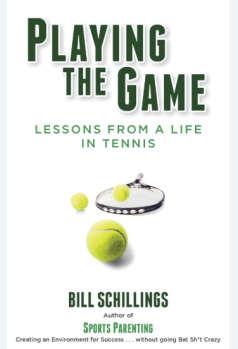
and this is at
the core of tennis as a game and a profession. I liked the final paragraph of the book so much that a por�on of it is quoted below:
“But tennis provided an environment through which many of the most important rela�onships in my life evolved – personal connec�ons that impacted me far beyond the �me I spent with a racket in my hand. When I think about all the people I met, either directly or indirectly through tennis, I can unreservedly say that those rela�onships mean more to me than any success I achieved playing the game. “
In summary, "Playing the Game: Lessons from a Life of Tennis" is not just a book about the sport of tennis; it’s a guide to life itself. Schillings weaves his personal journey with universal principles that anyone can apply to their own path, offering a blend of prac�cal advice, inspira�onal stories, and though�ul reflec�ons on the power of persistence, strategy, and mentorship. I highly recommend this fun book from one of our own RSPA tennis professionals. Well done Bill.







